
New seed-starting supplies
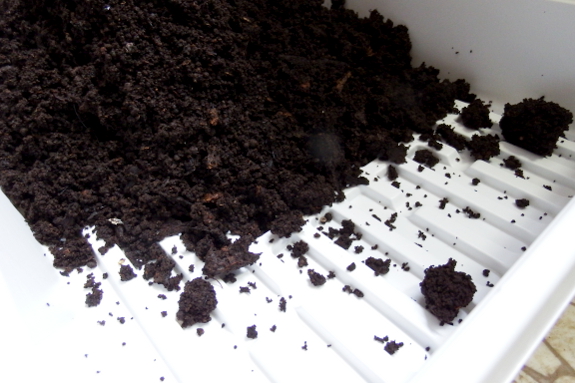
Onions are probably our
biggest vegetable-gardening Achilles heel --- we ran out in January
again this year. Wanting to be able to start these 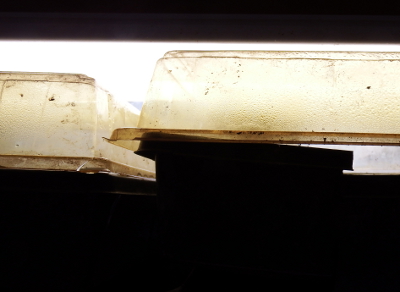 seedlings inside in February was a big part of the impetus for my spare-no-cost improved seed-starting campaign in fact.
seedlings inside in February was a big part of the impetus for my spare-no-cost improved seed-starting campaign in fact.
So it seems fitting that onions should be the first vegetables to enjoy our new flats.
The containers I've been using are literally a decade old, so all are
torn and not-quite waterproof. The new white ones are reputed to be a
little hardier, although I can tell I'll still need to be careful with
them. But maybe they'll be in a little better shape in 2026 when Mark
once again talks me into buying new gear?
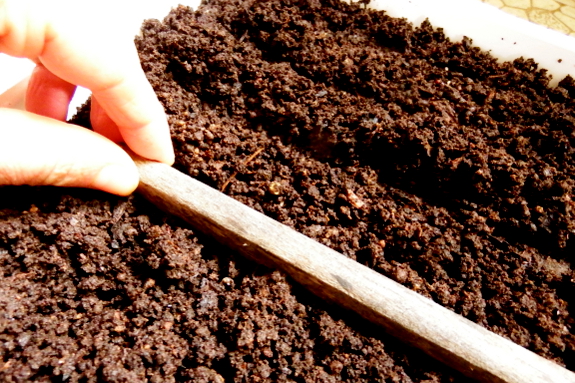
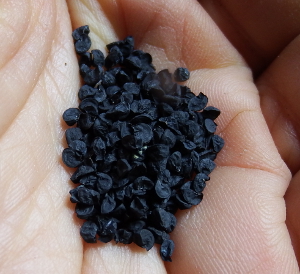 I
didn't use all new supplies, though. I found this wooden stick in
Mark's workshop (hopefully it wasn't intended for anything important)
and cut it to just the right length to make indented rows in my found stump dirt.
Then I meticulously sprinkled in the seeds, half an inch apart.
Finally, I added another thin coating of stump dirt atop each row and
pressed down gently with my palms to compact the earth.
I
didn't use all new supplies, though. I found this wooden stick in
Mark's workshop (hopefully it wasn't intended for anything important)
and cut it to just the right length to make indented rows in my found stump dirt.
Then I meticulously sprinkled in the seeds, half an inch apart.
Finally, I added another thin coating of stump dirt atop each row and
pressed down gently with my palms to compact the earth.
With potting soil,
there'd be a moistening step in there too (preferably before the soil
even hits the flats). But stump dirt comes out of the tree at the
perfect hydration level for planting seeds.
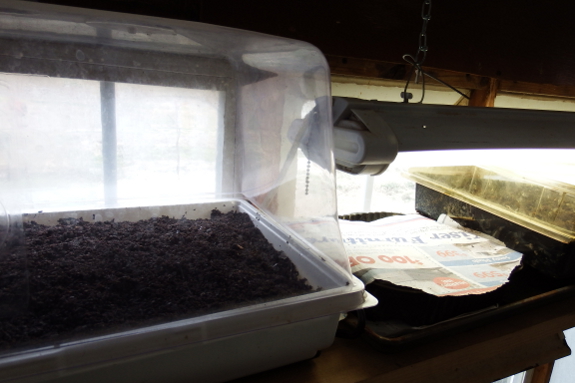
Mark growled when I took the heating pad out of Lucy's den and put it under my first set of flats. (Hey! That's why we bought the pad in the first place!) So I went ahead and splurged a little further, this time buying a heat mat that's waterproof and is just the right size and shape to fit beneath a seedling tray. My new humidity domes
hadn't arrived in the mail yet, so I popped a larger dome we use for
rooting perennial cuttings on top and called that flat complete.
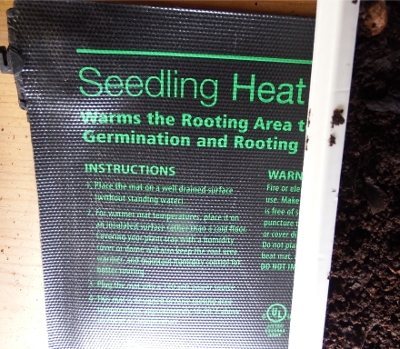 I'll
admit that these are going to be some expensive onions since we spent
nearly a hundred bucks on new seed-starting supplies. And that doesn't
even count the lights (which Mark already had on hand) or the
electricity we'll be using in the process.
I'll
admit that these are going to be some expensive onions since we spent
nearly a hundred bucks on new seed-starting supplies. And that doesn't
even count the lights (which Mark already had on hand) or the
electricity we'll be using in the process.
On the other hand, all of the same equipment will be reused next month
for starting broccoli, cabbage, and brussels sprouts. Then, since the
flats came in a ten-pack, I'll probably even make soil blocks for
watermelons and see if we can't get a crop of those heat-lovers in the
ground a little early this year. All told, I'm positive that these
supplies will more than pay for themselves many times over during the
next decade...and that's not even counting the dose of winter greenery
that will boost my spirits as I wait for spring.
Want more in-depth information? Browse through our books.
Or explore more posts by date or by subject.
About us: Anna Hess and Mark Hamilton spent over a decade living self-sufficiently in the mountains of Virginia before moving north to start over from scratch in the foothills of Ohio. They've experimented with permaculture, no-till gardening, trailersteading, home-based microbusinesses and much more, writing about their adventures in both blogs and books.
Want to be notified when new comments are posted on this page? Click on the RSS button after you add a comment to subscribe to the comment feed, or simply check the box beside "email replies to me" while writing your comment.
- Remove comment
